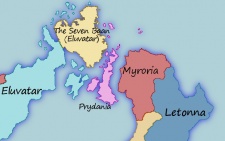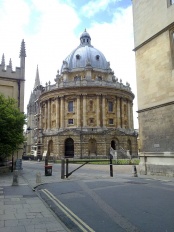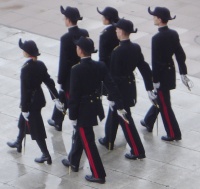Difference between revisions of "Myroria"
(→Demographics) |
(→Foreign relations and armed forces) |
||
| Line 135: | Line 135: | ||
===Foreign relations=== | ===Foreign relations=== | ||
| − | + | Myroria is a member of the [[Coalition of Carth]], an attendee [[Cefnor Conference]], and a founding member of the [[Cefnori Community]]. Myroria has historically had a close relationship with [[Eluvatar]] and [[Prydainia]] and shares technology and intelligence between both countries. In addition, Myroria shares an open travel area with [[Letonna]]. Myroria's foreign influence is further amplified through foreign investments, trading agreements, the foreign activities of its Great Houses, and military engagements. | |
===Military=== | ===Military=== | ||
''Main article: [[Imperial Armed Forces]]'' | ''Main article: [[Imperial Armed Forces]]'' | ||
| + | [[file:Myrorian cadets.jpg|right|thumb|200px|Cadets of the Imperial Naval Academy in full dress uniform.]] | ||
| + | The armed forces of Myroria - officially the ''[[Imperial Armed Forces]]'' - consist of three service branches: the [[Imperial Army]], the [[Imperial Navy]] and [[Imperial Marines]] (forming the Naval Services), and the [[Imperial Air Force]]. In addition, Myroria maintains [[Her Majesty's Coast Guard]] and [[Her Majesty's Border Service]]. The armed forces are managed by the Minister of Defense. The commander-in-chief of the Myrorian military is the monarch, currently [[Fredrika Tar-Ilium]], to whom members of the military swear an oath of allegiance. The Armed Forces are charged with defending Myroria and Nouvé Resdaynia from external threats, promoting Myroria's global security interests, and taking part in global peacekeeping missions. They are active participants in the [[Coalition of Carth]] and other international security treaties. | ||
| − | The | + | The Myrorian armed forces play a key part in maintaining Myroria's status as a world power. Throughout its history the armed forces have seen action in a number of wars, including the [[Great War]] and the [[Resdaynian Indigenous Wars]]. By emerging victorious from such events, Myroria has often been able to decisively influence world events. Since the end of the Great War, however, the Myrorian military has begun to shrink in size, and today the government spends only a small part of its GDP on defense expenditures. |
| − | + | ||
| − | + | ||
==Law and criminal justice== | ==Law and criminal justice== | ||
Revision as of 06:58, 16 September 2014
| The Union of the Great and Lesser Houses of Myroria | |||||
|---|---|---|---|---|---|
| |||||
| Motto: "Many houses, alike in dignity." | |||||
| Anthem: "Myroria" | |||||
| Geography | |||||

| |||||
| Area | 1.08 millionkm2 | ||||
| Water (%) | 7,180 km2 | ||||
| Highest point | White Mountain | ||||
| Longest river | River Ser | ||||
| Demographics | |||||
| Population | 55,000,000 | ||||
| • Density | 54.48/km2 | ||||
| • Growth | 0.75%/year | ||||
| Median age | 31.8 years | ||||
| Demonym | Myrorian | ||||
| History | |||||
| Establishment of Myroria | April 20, 1655
| ||||
| First Imperial election | November 5, 1678 | ||||
| Government | |||||
| Capital | Pelagis | ||||
| Official language | Inglish | ||||
| Type | Elective monarchy | ||||
| Legislature | Council of Great Houses | ||||
| Empeuress | Fredrika Quarrovth Tar-Ilium | ||||
| Head of the Majority (Quarrovth) | Idril Quarrovth
| ||||
| Imperial subjects | 4 counties 1 colonial dominion | ||||
| Economy | |||||
| Currency | guilden (ᵯ) (MG) | ||||
| GDP | $1.17 trillion | ||||
| • Per capita | $18,116 | ||||
| • Growth | 3.50%/year | ||||
| Sectors |
4% Agriculture | ||||
| Unemployment | 6.9% | ||||
| Gini | 46.8 | ||||
| Development | |||||
| Life expectancy | 78.8 years | ||||
| Improved water access | 98% | ||||
| Literacy | 99% | ||||
| Enrollment | 84.6% | ||||
| • Primary | 99.8% | ||||
| • Secondary | 98% | ||||
| • Tertiary | 56% | ||||
| Standards | |||||
| Measures | Metric | ||||
| Date format | Month-day-year | ||||
| Traffic | Right-hand | ||||
| Codes | |||||
| ISO code | MY | ||||
| Internet TLD | .my | ||||
| Calling code | +6 | ||||
The Union of the Great and Lesser Houses of Myroria (commonly known as Myroria) is an elective monarchy consisting of four counties and a royally-administered colony. Metropolitan Myroria is located on the northern tip of the Pelagean subcontinent, bordering Austrasia and Letonna to the south. The colony of Nouvé Resdaynia is located on the southwestern portion of the continent of Australis in the southern hemisphere.
Myroria possesses political features unique among contemporary states. Its political system is characterized by its election of the nation's king, known as its Empeurer, who rules until "death or bad behavior", and by the presence of numerous Houses, among which three Great Houses predominate. Houses derive from ancient Myrorian clans and families, but today function mainly as political parties; membership in Houses is determined by a complex system of births, marriages, and adoption of retainers. The Myrorian state has been described as a "fledgling democracy", an "absolute monarchy", and a "violent anocracy".
The mainland of Myroria was inhabited for thousands of years by the Pelagian people, who ruled an empire spanning Pelagea for millennia. By contrast, the Myrorian people inhabited a wide area north of Ozia until their migration to modern-day Myroria in the 1600s. A combined Myrorian, Eluvataran, and Prydainian force invaded the Pelagian Empire in 1653 and toppled the government, leading to the establishment of the modern Myrorian state in 1655.
Myroria is a developed country and one of the world's foremost industrial powers. Despite this, however, a majority of the population lives in rural areas throughout Myroria, and the nation has one of the highest income disparities in the world; roughly 17% of the population lives in poverty according to the Myrorian Census Agency. The Myrorian economy is mainly service-based, though a vibrant manufacturing sector exists as well. It is one of the world's foremost scientific powers and a leader in technology spending.
Contents
History
Etymology
The origins of the name "Myroria" begin with the Conquest of Pelagia. The land currently known as Myroria was originally the center of a vast empire known as Pelagia that existed for thousands of years. However, in 1733 an alliance of the "Old Myrorian" people, the Eluvatarans, the Prydainians and various other minor states toppled and destroyed the Pelagian Empire. During the long war between the Pelagians and the Old Myrorians, the Old Myrorians who previously had no name for themselves besides "We" or "Us" were called by the Pelagian name Myror, meaning "sickly" or "ill-favored by fate". With a Myrorian victory, the new inhabitants of Pelagia styled their nation "Myroria", after the Pelagian insult.
Prehistory and the Pelagian Empire
Excavations reveal a human presence in what is now Myroria dating to the Paleolithic era, over 200,000 years ago. Several tribes resided in the area, including the Pelagians. The Sindar Empire would later establish a foothold in the region in [year], but a Pelagian uprising would drive the Sindar from the area and establish an empire that would dominate the region and later lend its name to it - Pelagea.
Government and politics
Myroria is a constitutional monarchy. The monarch of Myroria, styled the Empeurer, in theory has unlimited power to make decrees as he or she pleases. In reality, however, the monarch's power is curtailed by a complex relationship with Myroria's legislature, the Council of Great Houses, composed of 421 representatives from the three Great Houses, confederations of Myrorian families that historically were based in tradition, rite, and religion, but now function mainly as political parties. There are no elections in the traditional sense of the word; membership in a Great House, and by proxy participation in government, is mainly a matter of birth, marriage, or adoption.
House and kin
Myroria has been organized for hundreds of years according to Great Houses. Great Houses were once complex traditions surrounding Myrorian families and tribes, but today function mainly as political parties. A Great House is comprised of one or more Lesser Houses, or Houses for short. Often a Great House is formed when one Lesser House swears fealty to another, usually larger or more powerful, Lesser House. In this way Lesser Houses can pool their political power. If a Lesser House feels its needs are being neglected within the larger Great House structure, it can break its bonds of fealty and go it alone, or pledge itself to a new Great House.
Membership in a House is largely a matter of birth or marriage, but anyone, even foreigners, can be adopted by a House as a retainer. Through hard work and recognition, even a commoner can raise their prospects and even become a member of the House leadership. Historically, before the Exodus, dozens of Great Houses ruled Myroria. After the invasion of Pelagia and the establishment of the new Myrorian state, it was set in law that the three largest Great Houses would rule Myroria jointly through the Council of Great Houses.
Historically disputes between Houses could become violent very quickly. Shortly after the Exodus, as the Myrorian people were settling in their new homeland, various feuds in which Houses almost marched on each other in force threatened to disrupt the stability of the central government. The Council of Great Houses enacted the institution of House War, where a House could legally order the execution of a rival noble that did them some wrong. This system persisted for hundreds of years until being banned in the 1940s by Fendryn Quarrovth, but assassinations in Myroria are still widely performed and its political system has been described as "violently anocratic".
The Council of Great Houses
The Council of the Great Houses of Myroria is a pseudo-democratic legislature in constant struggle for political supremacy with the Empeurer of Myroria. The Council is comprised of the three largest Great Houses of Myroria; generally each House appoints Councillors to represent it in the legislature. The number of legislators allocated to each house is determined by the Clerk of the Great Houses, described below. Every ten years, a census is conducted in Myroria where participants are asked which House they belong to. The majority House in each representative district of Myroria is allocated one seat on the council. In addition, the legislature is reapportioned every two years according to census projections, though this reapportionment is usually less dramatic than the post-census reapportionnment. Usually Councillors are members of the dominant family in the Great House, but a handful of Great Houses, such as Great House Vrotrith, have traditionally elected their members.
The rights reserved to the Council aren't specified in law, but its power has in general increased over the years. One power the Council has that has been officially enshrined in law is the power of impeachment. The Council can, by a two-thirds majority vote, impeach the Empeurer and remove him from office. This process has only ever been used when the Empeurer has broken some law enshrined in the Constitution of Myroria, but theoretically the Council could impeach the monarch simply for maladministration. The most recent Empeurer to be impeached was Peté Tar-Ilium in 1969.
Any time a House breaks a bond of fealty or forms a new one, this must be registered with the Clerk of the Great Houses. Called "the most powerful person in Myroria" by some, the Clerk registers and keeps track of the often complex network of marriages, births, and vassalships that characterize the relationships between the Great and Lesser Houses. In this way the Clerk ensures that each Great House gets an appropriate number of seats on the Council. The Council is officially reapportioned every two years by the Clerk, who traditionally belongs to no Great House.
The three Great Houses
Great House Quarrovth
Great House Quarrovth is the largest Great House on the council, holding 273 seats. Its members are mainly concentrated in County Ivorheart and County Traval, in the rural areas of the country. Most members of Great House Quarrovth are veterans or children of veterans. It soared from a relatively minor Great House in the early 1890s to the kingship after the death of Nelvil II Moomintroth in 1930 - after the Great War, new veterans flocked to the Quarrovth banner due to its leadership - General Fendryn Quarrovth, a war hero who fought in the Great War and the Indigenous Wars in Resdaynia. He became the first Quarrovth Empeurer upon the death of Nelvil II in 1930.
Since the 1940s, the House has promoted mainly a centrist libertarian platform, advocating few restrictions on industry and high personal freedom. Historically there was a strong social conservative wing based in rural County Ivorheart, but this wing has greatly diminished over time. The head, or Lord, of Great House Quarrovth is the reigning Empeuress of Myroria, Fredrika Quarrovth Tar-Ilium. The head of its Council delegation, and the Head of the Majority, is Idril Quarrovth.
Great House Vrotrith
Great House Vrotrith is the second-largest House on the Council, holding 109 seats. Its members mainly reside in County Novrith and in the cities scattered throughout Myroria. Most members of Great House Vrotrith are union workers, academics, and young college students. House Vrotrith is the only House on the Council to elect its representatives from its own members. It has been on the Council since the 1930s, when it replaced House Indiotrovth - never-confirmed rumors that the old aristocratic House had been infiltrated by foreign Dunedain agents greatly diminished Indiotrovth's standing among the people and its sworn Lesser Houses quickly fled from its banner.
Great House Vrotrith has always promoted a democratic socialist platform, and is fiercely anti-monarchy. Rothis Vrotrith has said on numerous occasions that if ever elected Empeurer, he would immediately dismantle the House system and replace it with a parliamentary democracy. Its head, or Premier, is Rothis Vrotrith and the head of its Council delegation, and the Head of Her Majesty's Loyal Opposition, is Lleram Vrotrith.
Great House Moomintroth
Great House Moomintroth is the smallest and politically weakest House on the Council, holding 39 seats. A shell of the glory it once had throughout the 1800s and early 1900s, its members are primarily old aristocrats scattered throughout the interior of County Novrith and County Ivorheart. It rode a wave of populist support for the monarchy throughout the intensely nationalistic days of the mid-19th century and was elected to the monarchy by a landslide, but a Pyrrhic victory and heavy losses during the Great War permanently crippled it politically, and it now spends most of its time waiting to be removed from the Council by some other upstart.
Politically, it holds a socially and economically conservative platform with a historically strong populist bent, but currently has few members among what would be called the "common people". Its Head, or Lord, is Duldrar "Papa" Moomintroth, and the head of its Council delegation is Deryn Moomintroth.
The Empeurer
The Empeurer, or Empeuress, from the Pelagian word meaning emperor, is the monarch of Myroria. He/she is elected to serve the rest of his or her life on the throne. As long as a House holds a majority on the Council, the Empeurer's heir is usually chosen to succeed him or her once they die. However, if, while a monarch is alive, a new House takes the majority, their heir is usually passed over in favor of a member of the new majority Great House.
The Empeurer is ostensibly an absolute monarch only beholden to what the Constitution forbids him/her to do. In reality, a complex system of checks and balances forbids the monarch from exercising too much power. Traditionally, the monarch submits a plan for its legislative agenda for the year to the Council every January, and acts by decree - though these decrees are largely ceremonial. Every potential law is carefully worked out in the Council before the monarch can officially make it so.
In certain instances, as when the "national security" is threatened, the monarch is allowed more leeway in what he or she is allowed to decree into law, but even then most things must be reviewed by the Council before they may be passed. The incumbent Empeuress is Fredrika Quarrovth Tar-Ilium, and has been on the throne since 1969.
Death of a king
On the seventh of May, 1930, the Empeurer of Myroria, Nelvil II Moomintroth, died. In the traditional Myrorian fashion, in the main courtyard of the Imperial Residence, a cage containing 30 black swallowtail butterflies was opened and its contents released to signal the death of the monarch, though most of the populace had heard of the event on the news hours before.
Great House Moomintroth had held a majority on the Council throughout the Great War, but shortly after its end found its bound Houses fleeing its banner in alarming numbers. By 1920 it was clear to everyone on the Council and off that House Moomintroth would not hold enough seats to win the election once Nelvil II died.
Soon after his death, the two major contenders for the kingship were Fendryn Quarrovth, war hero and decorated general, and Avos Indiotrovth, an aristocrat of high birth. House Moomintroth, still of formidable size, was the wild card - whichever Great House could form a coalition with Moomintroth for the vote would surely take the throne. House Moomintroth seemed naturally inclined to side with Indiotrovth - both Houses were made up of aristocrats of noble birth, as opposed to Great House Quarrovth, whose head was a virtual commoner who, while wealthy, had spent years on the far-flung colony of Nouvé Resdaynia.
Almost immediately after Nelvil's death, though, rumors soon started to spread that House Indiotrovth had been infiltrated by Dunedain - wealthy aristocratic nobles of Eluvatar who couldn't be more hated among the rural populace of Myroria. Despite the rumors never being confirmed, wide outrage among the populace forced Great House Moomintroth to form a coalition with Great House Quarrovth and elect Fendryn to the throne in June of 1930.
Such politicking is common among the Great Houses, especially near an Imperial election. After Fendryn's election it was widely believed on the Council that retainers of House Quarrovth started and deliberately spread the rumors about Indiotrovth in order to win the election - Empeurer Fendryn never responded to these rumors.
Foreign relations and armed forces
Foreign relations
Myroria is a member of the Coalition of Carth, an attendee Cefnor Conference, and a founding member of the Cefnori Community. Myroria has historically had a close relationship with Eluvatar and Prydainia and shares technology and intelligence between both countries. In addition, Myroria shares an open travel area with Letonna. Myroria's foreign influence is further amplified through foreign investments, trading agreements, the foreign activities of its Great Houses, and military engagements.
Military
Main article: Imperial Armed Forces
The armed forces of Myroria - officially the Imperial Armed Forces - consist of three service branches: the Imperial Army, the Imperial Navy and Imperial Marines (forming the Naval Services), and the Imperial Air Force. In addition, Myroria maintains Her Majesty's Coast Guard and Her Majesty's Border Service. The armed forces are managed by the Minister of Defense. The commander-in-chief of the Myrorian military is the monarch, currently Fredrika Tar-Ilium, to whom members of the military swear an oath of allegiance. The Armed Forces are charged with defending Myroria and Nouvé Resdaynia from external threats, promoting Myroria's global security interests, and taking part in global peacekeeping missions. They are active participants in the Coalition of Carth and other international security treaties.
The Myrorian armed forces play a key part in maintaining Myroria's status as a world power. Throughout its history the armed forces have seen action in a number of wars, including the Great War and the Resdaynian Indigenous Wars. By emerging victorious from such events, Myroria has often been able to decisively influence world events. Since the end of the Great War, however, the Myrorian military has begun to shrink in size, and today the government spends only a small part of its GDP on defense expenditures.
Law and criminal justice
Lorem ipsum dolor sit amet, consectetur adipisicing elit, sed do eiusmod tempor incididunt ut labore et dolore magna aliqua. Ut enim ad minim veniam, quis nostrud exercitation ullamco laboris nisi ut aliquip ex ea commodo consequat. Duis aute irure dolor in reprehenderit in voluptate velit esse cillum dolore eu fugiat nulla pariatur. Excepteur sint occaecat cupidatat non proident, sunt in culpa qui officia deserunt mollit anim id est laborum.
Geography
Lorem ipsum dolor sit amet, consectetur adipisicing elit, sed do eiusmod tempor incididunt ut labore et dolore magna aliqua. Ut enim ad minim veniam, quis nostrud exercitation ullamco laboris nisi ut aliquip ex ea commodo consequat. Duis aute irure dolor in reprehenderit in voluptate velit esse cillum dolore eu fugiat nulla pariatur. Excepteur sint occaecat cupidatat non proident, sunt in culpa qui officia deserunt mollit anim id est laborum.
Climate
Lorem ipsum dolor sit amet, consectetur adipisicing elit, sed do eiusmod tempor incididunt ut labore et dolore magna aliqua. Ut enim ad minim veniam, quis nostrud exercitation ullamco laboris nisi ut aliquip ex ea commodo consequat. Duis aute irure dolor in reprehenderit in voluptate velit esse cillum dolore eu fugiat nulla pariatur. Excepteur sint occaecat cupidatat non proident, sunt in culpa qui officia deserunt mollit anim id est laborum.
Demographics
Population
A census is taken simultaneously in all parts of Myroria and Nouvé Resdaynia every ten years. The Myrorian Census Bureau is responsible for collecting this data in Metropolitan Myroria and the Resdaynian Census Board is responsible for collection in Nouvé Resdaynia. In the 1980 census the population of Myroria was 55,120,908. Between 1971 and 1981 the population of Myroria increased by an annual rate of approximately 0.75 percent. This compares to 0.6 percent between the years of 1961 and 1971 and 0.7 percent between the years of 1951 and 1961.
Myrorian society is linguistically and culturally homogenous, comprised of 95.1% ethnic Myrorians, with small populations of immigrants. Austrasians, Eluvatarans, and Ozians comprise most of Myroria's immigrant groups. The Pelagian people, indigenous to the Myrorian mainland, are the largest single minority group. Most Pelagians live in Myroria's cities, and in a few Pelagian-majority towns in County Ivorheart. Some sociologists have characterized Myroria, and especially Myrorian cities, as a "multicultural society", which the Myrorian government vehemently denies. The official position of most Myrorian politicians is that the nation is a land of "one race, one civilization, one language, and one culture.". Discrimination against foreigners and Pelagians is commonplace; one study found that one out of three Pelagians were victims of a violent crime perpetrated by a Myrorian.
Myroria's average life expectancy is 78.8 years, but in reality it is much lower for people living in poverty. The median age is 31.8 years. About 78% of Myrorians live in rural areas. In 1980, only one Myrorian city, Novrith, had a population of over one million, though the combined metropolitan area of Fellowmoor-Pelagis nears Novrith's in size. The cities of Novrith and Pelagis both grew by more than 100,000 people between 1970 and 1980.
| Largest metropolitan areas | ||||||
|---|---|---|---|---|---|---|
| # | City | Population | ||||
| 1 | Novrith | 1,007,000 (2010) | ||||
| 2 | Pelagis | 670,350 | ||||
| 3 | Fellowmoor | 450,900 | ||||
| 4 | Ivorheart | 197,350 | ||||
| 5 | Quarrovth | 129,708 | ||||
| 6 | Nelvil's Landing, Nouvé Resdaynia | 101,967 | ||||
| 7 | Traval | 95,367 | ||||
| 8 | Thanelen | 69,108 | ||||
Language
| Language | Percent of population |
Number of speakers |
|---|---|---|
| Inglish | 79.6% | 43,890,100 |
| Combined total of all languages other than Inglish |
20.4% | 11,230,808 |
| Pelagian | 9% | 5,130,000 |
| Ozian (including Moaz and Ozian) |
4% | 2,230,400 |
| Neustrian/Austrasian | 1.8% | 1,009,000 |
| Eruvite | 1.7% | 970,000 |
| Arskovaa | 0.9% | 530,100 |
Inglish (Myrorian Inglish) is the de facto national language. Although there is no official language at the government level, some laws standardize Inglish usage. In 1980, roughly 44 million people, or 80% of the population, speak Inglish as their first language and/or at home. Pelagian, spoken at home by 9% of the population, is the second most common language and the most widely taught second language. Pelagian is used widely as a technical language as well, mostly in law and the sciences. Some Myrorians advocate making Inglish the country's official language.
In Nouvé Resdaynia, which has a large Resdaynian Aborigine population, both Inglish and the Aboriginal language of K'tarinjara are official languages. While neither has an official language, County Traval has laws providing for the use of both Inglish and Austrasian, as County Ivorheart has for the use of Inglish and Neustrian. In addition, County Traval mandates the translation of government documents into the Austrasian language. Many jurisdictions with large foreign-born populations mandate translations of government materials such as census forms into the most commonly spoken language there.
Myrorian Sign Language (MSL) is the native language of a number of Deaf and hearing people in Myroria. While few studies have been conducted, by some counts up to 350,000 Myrorians are fluent in MSL. Approximately 239 languages are spoken or signed by the Myrorian population, of which only Pelagian and its dialects are indigenous to the area. Thirty-seven languages formerly spoken in Myroria's territory are now extinct.
Religion
Myroria's laws prohibit the establishment of a national religion and guarantee the free exercise of religion by the nation's populace. Myrorian Catholicism is by far the most common religion practiced in Myroria, but others are followed as well. In a 1982 survey, 45% of Myrorians said religion played a "very important role" in their lives, a far lower percentage than only 20 years earlier in 1962, where 60% of Myrorians said religion was very important to them. A 1980 poll found that an average of 39% of Myrorians attend church weekly; ranging from a low of 20% in County Novrith to a high of 57% in the east of County Ivorheart. As with other Eastern countries, Myroria is becoming less religious. Irreligion is growing particularly quickly among adults under 30. Polls show that overall Myrorians have less confidence in organized religion than in the past an d that younger Myrorians in particular are becoming more irreligious.
According to a 1982 survey, 71.2% of Myrorians said that they were Catholic, down from 78% in 1970. The total reporting non-Catholic religion was 7%, up from 5% in 1970. Other religions include Gaeanism, Eruvism, and various Pelagian pagan religions. The survey also reported that 19.8% of Myrorians described themselves as irreligious, whether it be atheist, agnostic, or simply having no religion. Religion plays the largest role in daily life in the interior of the nation, mostly in County Ivorheart and northeastern County Traval. By contrast, religion plays the smallest role in the coasts and cities, especially County Novrith and coastal County Traval.
Economy
Lorem ipsum dolor sit amet, consectetur adipisicing elit, sed do eiusmod tempor incididunt ut labore et dolore magna aliqua. Ut enim ad minim veniam, quis nostrud exercitation ullamco laboris nisi ut aliquip ex ea commodo consequat. Duis aute irure dolor in reprehenderit in voluptate velit esse cillum dolore eu fugiat nulla pariatur. Excepteur sint occaecat cupidatat non proident, sunt in culpa qui officia deserunt mollit anim id est laborum.
Culture
Cinema
Lorem ipsum dolor sit amet, consectetur adipisicing elit, sed do eiusmod tempor incididunt ut labore et dolore magna aliqua. Ut enim ad minim veniam, quis nostrud exercitation ullamco laboris nisi ut aliquip ex ea commodo consequat. Duis aute irure dolor in reprehenderit in voluptate velit esse cillum dolore eu fugiat nulla pariatur. Excepteur sint occaecat cupidatat non proident, sunt in culpa qui officia deserunt mollit anim id est laborum.
Literature
Lorem ipsum dolor sit amet, consectetur adipisicing elit, sed do eiusmod tempor incididunt ut labore et dolore magna aliqua. Ut enim ad minim veniam, quis nostrud exercitation ullamco laboris nisi ut aliquip ex ea commodo consequat. Duis aute irure dolor in reprehenderit in voluptate velit esse cillum dolore eu fugiat nulla pariatur. Excepteur sint occaecat cupidatat non proident, sunt in culpa qui officia deserunt mollit anim id est laborum.
Music
Lorem ipsum dolor sit amet, consectetur adipisicing elit, sed do eiusmod tempor incididunt ut labore et dolore magna aliqua. Ut enim ad minim veniam, quis nostrud exercitation ullamco laboris nisi ut aliquip ex ea commodo consequat. Duis aute irure dolor in reprehenderit in voluptate velit esse cillum dolore eu fugiat nulla pariatur. Excepteur sint occaecat cupidatat non proident, sunt in culpa qui officia deserunt mollit anim id est laborum.
Philosophy
Lorem ipsum dolor sit amet, consectetur adipisicing elit, sed do eiusmod tempor incididunt ut labore et dolore magna aliqua. Ut enim ad minim veniam, quis nostrud exercitation ullamco laboris nisi ut aliquip ex ea commodo consequat. Duis aute irure dolor in reprehenderit in voluptate velit esse cillum dolore eu fugiat nulla pariatur. Excepteur sint occaecat cupidatat non proident, sunt in culpa qui officia deserunt mollit anim id est laborum.
Science, innovation, and engineering
Lorem ipsum dolor sit amet, consectetur adipisicing elit, sed do eiusmod tempor incididunt ut labore et dolore magna aliqua. Ut enim ad minim veniam, quis nostrud exercitation ullamco laboris nisi ut aliquip ex ea commodo consequat. Duis aute irure dolor in reprehenderit in voluptate velit esse cillum dolore eu fugiat nulla pariatur. Excepteur sint occaecat cupidatat non proident, sunt in culpa qui officia deserunt mollit anim id est laborum.








